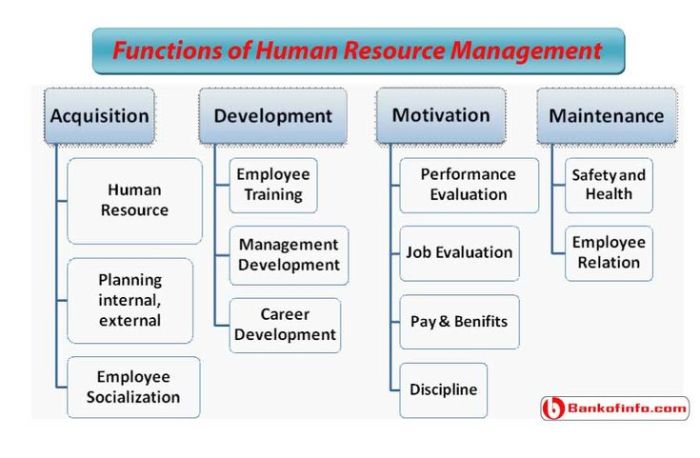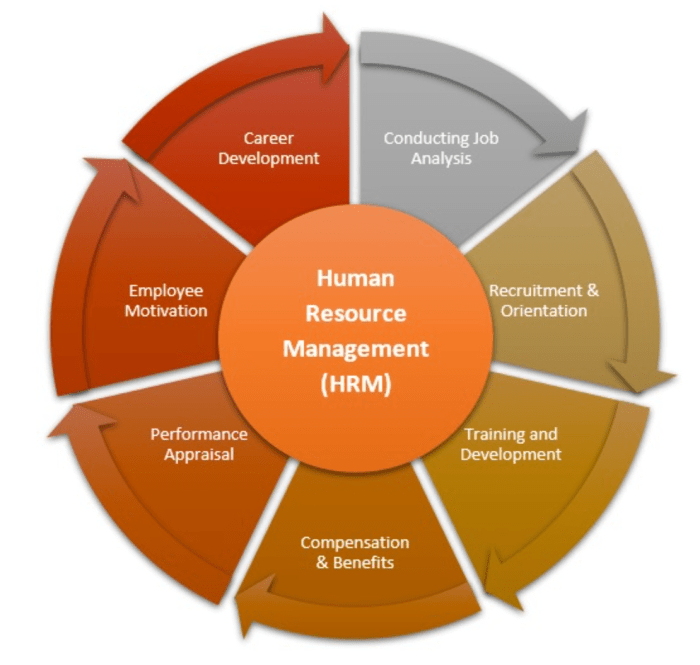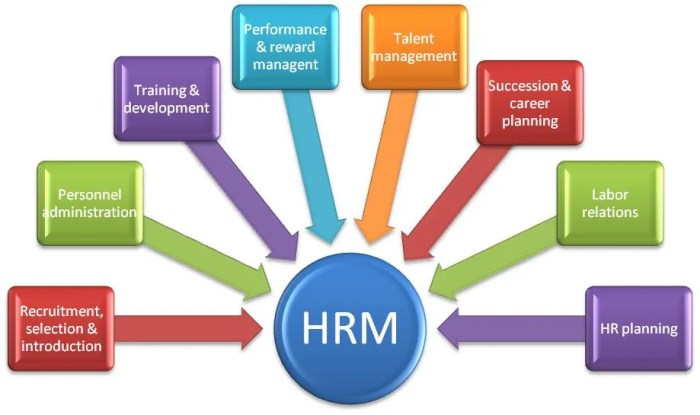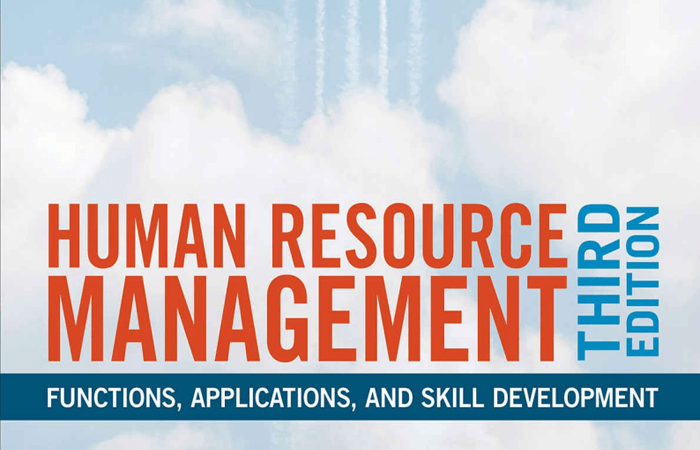Human resource management functions applications and skill development – Human resource management functions, applications, and skill development are crucial aspects of modern organizations. This comprehensive guide explores the essential functions of HRM, its strategic role in organizational success, and the importance of developing the necessary skills for effective HRM professionals.
HRM plays a pivotal role in aligning business objectives with employee engagement, retention, and overall organizational performance. By understanding the applications of HRM in various industries and examining case studies of successful practices, we gain insights into its practical implications.
Human Resource Management (HRM) Functions

Human Resource Management (HRM) encompasses a wide range of functions that are essential for the effective operation of any organization. These functions include:
- Recruitment and Selection:Identifying, attracting, and hiring the best candidates for open positions.
- Training and Development:Providing employees with the knowledge, skills, and abilities they need to perform their jobs effectively.
- Performance Management:Evaluating employee performance, providing feedback, and setting goals for improvement.
- Compensation and Benefits:Determining and administering fair and competitive compensation and benefits packages.
- Employee Relations:Fostering positive relationships between employees and management, resolving conflicts, and ensuring compliance with labor laws.
Strategic Role of HRM in Organizational Success
HRM plays a strategic role in organizational success by aligning its functions with the overall business objectives. By attracting and retaining top talent, developing a skilled and engaged workforce, and fostering a positive work environment, HRM contributes to increased productivity, innovation, and profitability.
Examples of How HRM Aligns with Business Objectives
Here are some examples of how HRM functions align with business objectives:
- Recruitment and Selection:Hiring employees with the skills and experience necessary to meet current and future business needs.
- Training and Development:Providing employees with the training and development opportunities they need to adapt to changing business requirements.
- Performance Management:Setting clear performance expectations and providing employees with the support and resources they need to achieve them.
- Compensation and Benefits:Offering competitive compensation and benefits packages to attract and retain top talent.
- Employee Relations:Creating a positive work environment that promotes employee engagement and productivity.
Applications of HRM

HRM has numerous applications across various industries and organizations. Some of the most common applications include:
- Recruitment and Selection:Using innovative recruitment strategies and assessment tools to find the best candidates for open positions.
- Employee Engagement:Developing and implementing programs to increase employee engagement, motivation, and satisfaction.
- Retention Management:Identifying and addressing factors that contribute to employee turnover and developing strategies to retain top talent.
- Diversity and Inclusion:Creating and maintaining a diverse and inclusive workplace that values all employees.
- Employee Wellness:Promoting employee health and well-being through programs and initiatives that support physical, mental, and emotional health.
How HRM Contributes to Employee Engagement and Retention, Human resource management functions applications and skill development
HRM contributes to employee engagement and retention by creating a positive work environment, providing opportunities for growth and development, and offering competitive compensation and benefits. Engaged and retained employees are more productive, have higher job satisfaction, and are less likely to leave the organization.
Case Studies or Examples of Successful HRM Practices
Numerous case studies and examples demonstrate the positive impact of successful HRM practices. For instance, Google’s focus on employee well-being and innovation has resulted in high levels of employee engagement and productivity. Southwest Airlines’ commitment to employee empowerment and customer service has led to exceptional customer satisfaction and profitability.
Skill Development in HRM: Human Resource Management Functions Applications And Skill Development

Effective HRM professionals require a diverse set of skills to perform their roles effectively. These skills include:
- Communication:Excellent verbal and written communication skills are essential for interacting with employees, managers, and stakeholders.
- Interpersonal:Strong interpersonal skills are necessary for building relationships, resolving conflicts, and motivating employees.
- Analytical:The ability to collect, analyze, and interpret data is crucial for making informed decisions and developing effective HRM strategies.
- Problem-Solving:HRM professionals must be able to identify and solve problems that arise in the workplace.
- Business Acumen:An understanding of business principles and practices is essential for aligning HRM functions with organizational objectives.
Methods and Approaches for Developing HRM Skills
HRM professionals can develop their skills through a variety of methods, including:
- Formal Education:Pursuing a degree or certification in HRM provides a solid foundation in the field.
- On-the-Job Training:Working under the supervision of experienced HRM professionals can provide valuable hands-on experience.
- Workshops and Conferences:Attending workshops and conferences allows HRM professionals to learn about new trends and best practices.
- Mentoring and Coaching:Receiving guidance and support from experienced mentors or coaches can accelerate skill development.
- Self-Directed Learning:Reading books, articles, and online resources can help HRM professionals stay up-to-date on the latest developments in the field.
Roadmap for Continuous Professional Development in HRM
HRM professionals should engage in continuous professional development to keep their skills current and advance their careers. This can involve:
- Setting Career Goals:Identifying specific skills and areas of expertise to develop.
- Creating a Development Plan:Outlining a plan for acquiring the necessary skills through formal education, on-the-job training, or other methods.
- Regularly Evaluating Progress:Assessing progress towards career goals and making adjustments to the development plan as needed.
- Networking:Building relationships with other HRM professionals and staying informed about industry trends.
- Seeking Feedback:Regularly soliciting feedback from colleagues, managers, and mentors to identify areas for improvement.
FAQ Explained
What are the primary functions of HRM?
The primary functions of HRM include recruitment and selection, performance management, employee relations, compensation and benefits, and training and development.
How does HRM contribute to organizational success?
HRM contributes to organizational success by aligning human capital with business objectives, fostering a positive work environment, and enhancing employee productivity and engagement.
What are the essential skills required for effective HRM professionals?
Effective HRM professionals require skills in communication, interpersonal relations, strategic planning, data analysis, and knowledge of labor laws and regulations.
